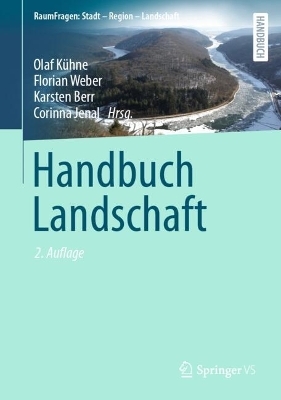
European Port Cities in Transition
Springer International Publishing (Verlag)
978-3-030-36466-3 (ISBN)
This book examines the role of modern seaports in Europe and consider how port-cities are responding to these major drivers for change. It discusses the broad issues facing European Sea Ports, including port life cycles, spatial planning, and societal integration. May 2019 saw the 200th anniversary of the first steam ship to cross the Atlantic between the US and England, and it is just over 60 years since the invention of the modern intermodal shipping container - both drivers of change in the maritime and ports industry. Increasing movements of people, e.g. through low cost cruises to port cities, can play a major role in changing the nature of such a city and impact on the lives of the people living there. This book brings together original research by both long-standing and younger scholars from multiple disciplines and builds upon the wider discourse about sea ports, port cities, and sustainability.
Foreword by David Pinder.- Chapter 1. Introduction.- Chapter 2. Port-City redevelopment and Sustainable Development.- Chapter 3. A Life-Cycle Model for port redevelopment strategies.- Chapter 4. Port-City redevelopment and the Circular Economy agenda in Europe.- Chapter 5. Technological Change and Logistics Development in European Ports.- Chapter 6. European Spatial Planning and Port-Cities.- Chapter 7. Organisational Change Management in Seaports.- Chapter 8. Urban Regeneration and Spatial Restructuring of Ports in Cities.- Chapter 9.Policy and Planning Issues in European Waterfront areas.- Chapter 10. Touristification of European Port Cities: Impact on local populations and cultural heritage.- Chapter 11. Governance Structures in Port Cities.- Chapter 12. The Intermodal Centrality of European Port and non-Port Cities: An Appraisal.- Chapter 13. The separation of ports from cities: The Case of Rotterdam.- Chapter 14. Integrated Port Cities: The Case of Hamburg.- Chapter 15. The Societal Integration of Ports and Cities: Case Study on Spanish Ports.- Chapter 16. The Consolidation of Waterfronts as Places of Leisure: Evidence from the South Bank of the Tagus Estuary, Portugal.- Chapter 17. Analysis of Interpretative Frameworks and Decision-Making in Maritime Environmental Disasters.- Chapter 18. Sustainability Assessment of Seaports.- Chapter 19. Conclusions.
"While there is no reason to be naïve about the lobbying power of shipping lines or port authorities, the prospect is good for advancing with some new policy schemes that would support sustainability in port and port-city affairs. On this aspect the book provides ample ideas and inspirations for ports, port cities and governing bodies on how to get further along the difficult path to sustainable development." (Markus Hesse, Journal of Transport Geography, Vol. 96, 2021)
“While there is no reason to be naïve about the lobbying power of shipping lines or port authorities, the prospect is good for advancing with some new policy schemes that would support sustainability in port and port-city affairs. On this aspect the book provides ample ideas and inspirations for ports, port cities and governing bodies on how to get further along the difficult path to sustainable development.” (Markus Hesse, Journal of Transport Geography, Vol. 96, 2021)
| Erscheinungsdatum | 26.01.2021 |
|---|---|
| Reihe/Serie | Strategies for Sustainability |
| Zusatzinfo | XVIII, 345 p. 66 illus., 53 illus. in color. |
| Verlagsort | Cham |
| Sprache | englisch |
| Maße | 155 x 235 mm |
| Gewicht | 620 g |
| Themenwelt | Naturwissenschaften ► Geowissenschaften ► Geografie / Kartografie |
| Schlagworte | circular economy • Port Life-Cycle • sustainable development • Transportation Geography • Urban Development • urban geography and urbanism |
| ISBN-10 | 3-030-36466-6 / 3030364666 |
| ISBN-13 | 978-3-030-36466-3 / 9783030364663 |
| Zustand | Neuware |
| Haben Sie eine Frage zum Produkt? |
aus dem Bereich


